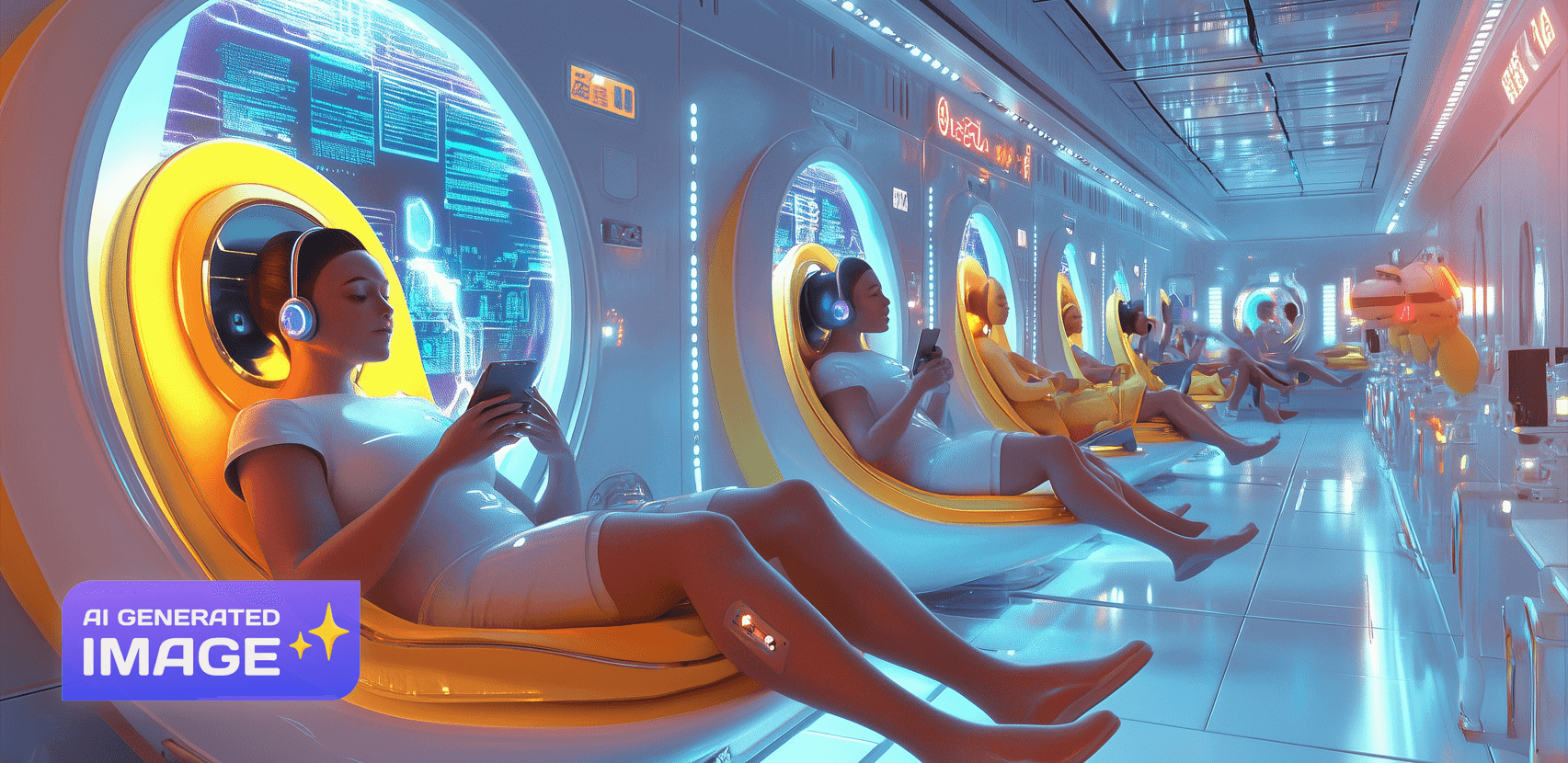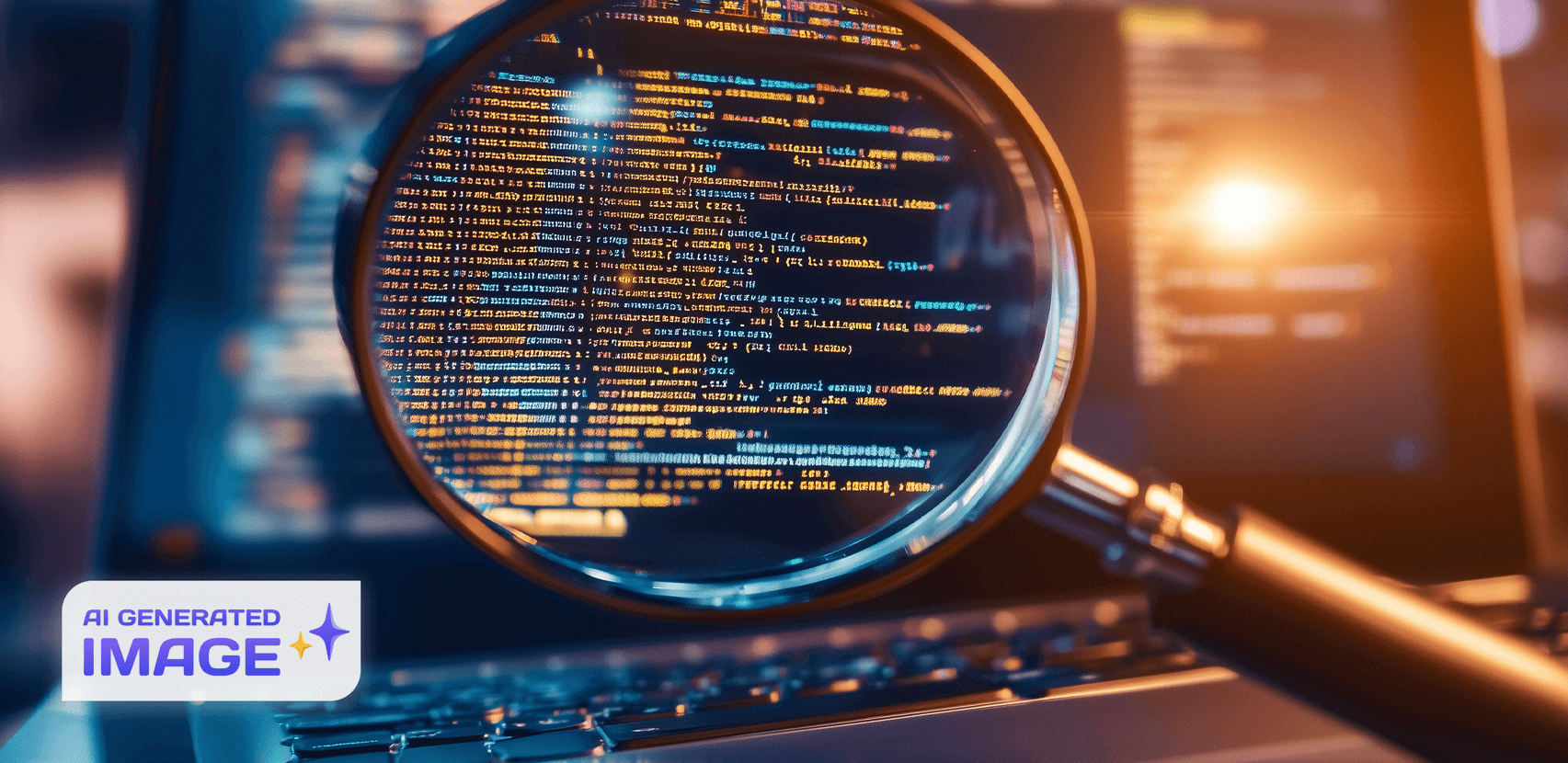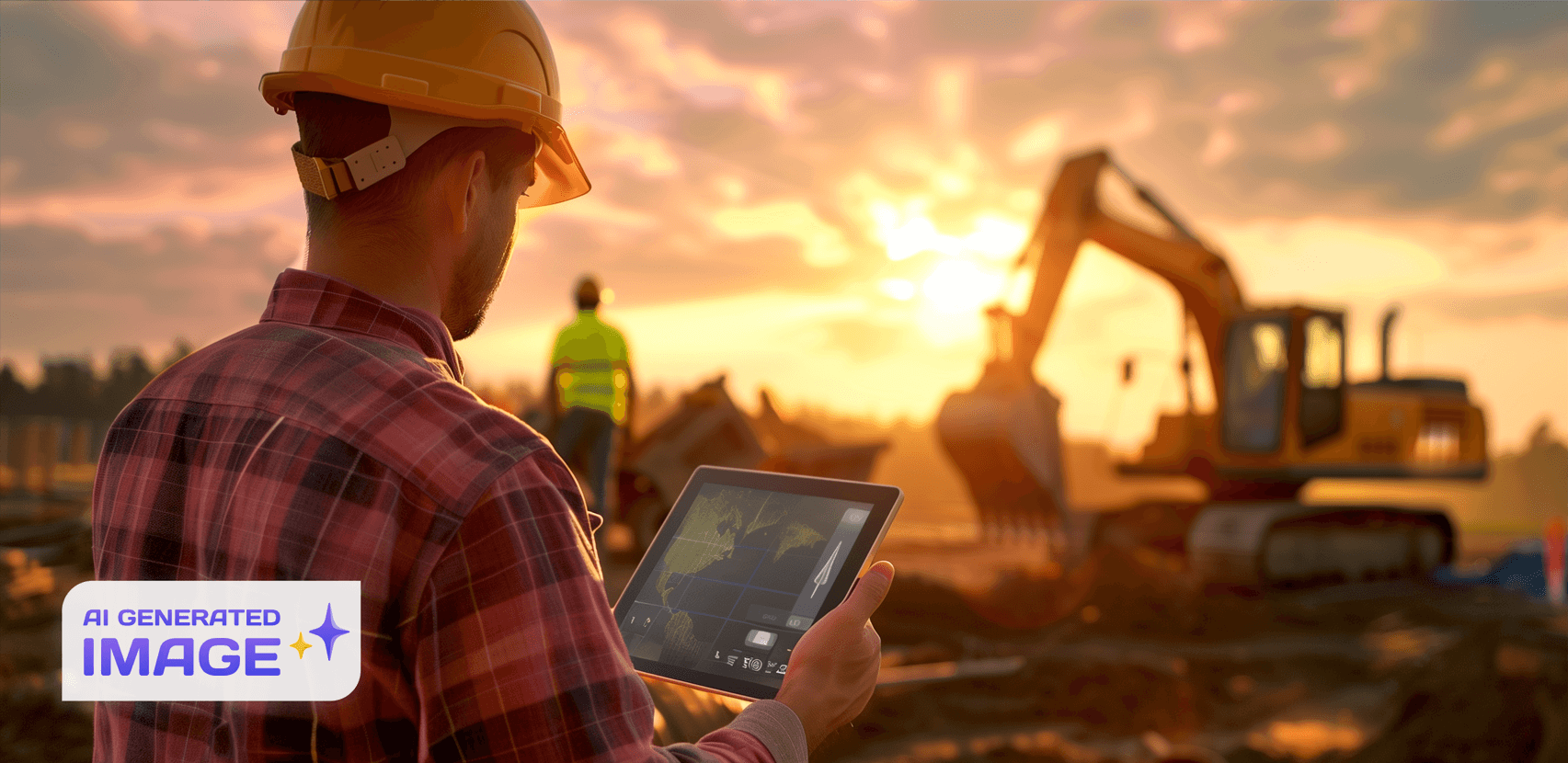Are We Headed Towards Becoming Axiom Humans as Seen in WALL-E?

Remember Wall-E? You know, that Pixar movie where humans live on a giant spaceship because they trashed Earth so badly with garbage and waste that they had to leave? It might sound like a far-out sci-fi story, but here’s the thing, looking at how we rely more and more on technology today, maybe it’s not as far-fetched as we think. And as artificial intelligence (AI) continues to advance at a rapid rate, we at Jetpack Labs can’t help but wonder, are we headed towards becoming ‘Axiom Humans,’ entirely reliant on technology and AI agents?
In WALL-E, the humans aboard the Axiom spaceship have devolved (I wish we could say evolved) into morbidly obese, lazy beings who rely on hovering chairs and robots to cater to their every whim. They’re so wrapped up in their screens that they don’t even notice the person sitting right next to them. All day long, they just scroll through endless feeds of videos and games. Sounds a bit like us today, doesn’t it? Sure, the movie might be pushing it to the extreme, but next time you’re in a coffee shop or on the bus, take a look around. How many people are staring at their phones instead of talking to each other? It’s kind of scary how close to home this amazing movie actually hits.
WALL-E took place in the year 2805 in the movie, 780 years from today(Jan 2025). So here’s the big question we need to ask ourselves: are we rapidly heading toward that WALL-E future sooner? Can we find a way to embrace all this cool new AI technology without losing what makes us human?
The Rise of AI Agents
Before we talk about becoming WALL-E humans, let’s look at what AI agents actually are and how they’re already part of our lives. Think of AI agents as digital helpers that can understand what’s going on around them, learn from it, and take action.
These AI helpers are already working behind the scenes in tools you might use every day. Take GitHub Copilot, it’s like having a coding buddy that helps programmers write code by suggesting what to type next.
The world of AI agents is exploding with new tools that feel straight out of a sci-fi movie. Want to make YouTube videos but camera shy? DeepSeek AI can help create entire videos without you ever having to show your face. It works with other AI tools to handle everything from voice-overs to video editing. Or look at FlowiseAI, it lets you build entire teams of AI agents to handle complex tasks, kind of like having a virtual workforce at your fingertips, no coding needed.
Big tech companies are jumping in too. Google’s Vertex AI Agent Builder is helping developers create smart AI assistants that can handle everything from customer service to data analysis. And for teams trying to stay organized, there’s Taskade’s AI tools that act like super-powered project managers, automating all those tedious tasks that used to eat up our time.
And it goes way beyond just personal tools. Ever notice how Google Maps doesn’t just show you the route anymore, but actually reroutes you around traffic jams in real-time? That’s an AI agent at work. Or how about when you’re shopping on Amazon and it somehow knows exactly what you might need next? Those product recommendations come from AI agents analyzing millions of shopping patterns. Even your car might have AI agents, Tesla’s Autopilot is constantly watching the road and learning to be a better driver.
In the business world, these AI agents are taking on even bigger jobs. Customer service chatbots like the ones used by Apple or Bank of America can now handle complex problems that used to need a human. Grammarly doesn’t just fix your spelling, it helps rewrite entire paragraphs to sound more professional. And tools like Midjourney or DALL-E are creating artwork and designs that used to take human artists hours to make.
Becoming Axiom Humans
While the benefits of AI agents are undeniable, their presence and our growing reliance on them raise some concerning questions. Could we be paving the way towards becoming ‘Axiom Humans,’ just like in WALL-E?
Here’s a scary thought: the more we let AI do things for us, the less we move around ourselves. Think about it, we already get our groceries delivered, work from our couches, and ask Alexa to turn off the lights so we don’t have to get up. While we’re not quite at WALL-E’s floating chairs yet, we’re already letting technology make us pretty lazy. Every time an app or robot takes over another task, that’s one less reason for us to get up and move.
There’s another problem too, AI is getting really good at keeping us glued to our screens. You know how TikTok seems to know exactly what videos will keep you scrolling? Or how Netflix always has another show ready to play? That’s all AI, and it’s designed to keep us hooked. Before you know it, hours have gone by, just like those folks in WALL-E who couldn’t take their eyes off their screens. The scary part is, these AI systems are only getting better at grabbing and keeping our attention.
But here’s what really worries us, the more we let AI handle tough problems, the less we exercise our own brain muscles. And I’m not just making this up. We recently saw this wild tweet from someone who interviews people for tech jobs. They were interviewing this candidate who just couldn’t crack some basic problem-solving questions. Then something clicked, the candidate admitted they’d been using ChatGPT so much for everyday decisions that their own critical thinking skills had gotten super rusty. Like someone who’s forgotten how to do math because they always use a calculator.
It was a real eye-opener for everyone in that room. Just like how the humans in WALL-E couldn’t do anything without their robots and screens, we might be heading down a path where we’re too dependent on AI to think for ourselves. Not because AI companies are trying to make us dumber or anything, but because it’s just easier to let AI do the thinking for us. It’s like that saying about muscles: use it or lose it. Except here, we’re talking about our brains.”
Embracing AI While Preserving Our Humanity
While the potential pitfalls of AI agents and the ‘Axiom Human’ scenario are concerning, it’s essential to recognize that technology is neither inherently good nor bad, it’s how we choose to utilize and integrate it into our lives that truly matters.
We were reading what Jared Kaplan from Anthropic had to say about this. He thinks AI is going to get way better at all sorts of things, from using different software tools to understanding what we really mean when we ask for help. It’ll get better at helping people write code and staying safe from hackers too.
However, he emphasized the importance of striking a balance between leveraging the benefits of AI agents while also maintaining our human agency and critical thinking skills. He suggests that AI agents should be designed to augment and empower human capabilities, rather than replace them entirely. So how do we avoid turning into those people from WALL-E? We need to be smart about how we use AI and technology in our daily lives. It’s not just about one or two things, we need to think about how tech fits into everything we do.
Let’s start with the basics, we need to stay active, even as our world gets more digital. Instead of letting AI make us couch potatoes, why not use it to get us moving? Picture an AI that turns your daily walk into a fun adventure game, sending you on mini quests around your neighborhood. Or a smart workout app that knows when to push you harder and when to dial it back, making exercise feel more like a game and less like a chore. Imagine that, as much as we espouse on what the future holds with AI, we suggested an AI tool instead of a human, There is no escape!.
Next up is keeping our brains sharp. Sure, AI can help us solve problems, but we shouldn’t let it do all our thinking for us. Think of AI more like a study partner than a cheat sheet. In schools and at work, we could use AI to come up with tricky problems for students to solve, or to show us different ways of looking at things we thought we had figured out.
Finally, and this is a big one, we can’t forget about real human connections. Sure, AI can help us stay in touch with messages and reminders, but it can’t replace sitting down for coffee with a friend. We all know that feeling when a quick chat over coffee turns into a two-hour conversation that’s worth more than a hundred text messages. These real, face-to-face moments keep us human and remind us we’re all in this together.
We also need to keep a close eye on how AI is being built and used. It’s not enough to just trust that everything will work out fine. We need to ask questions: How does this AI make its decisions? What’s it doing with our data? We should be part of these conversations because these technologies are going to shape our future.
And here’s something really important, we need to keep learning and growing. The world of AI is moving super fast, and if we’re not learning, we’re falling behind. But this doesn’t mean you need to know about every new AI tool that comes out. It’s more about staying curious and flexible, so we’re helping shape how AI is used rather than just letting it happen to us.
When Profit Calls the Shots
But here’s the thing, while researchers like Kaplan talk about finding the right balance with AI, big companies might have different plans. And we’re already seeing this play out in real time. Just look at what Mark Zuckerberg recently told investors, he’s planning to hire fewer engineers in the future because AI can help write code now. That’s not some far-off prediction, it’s happening right now at one of the world’s biggest tech companies.
And it gets even more concerning. Microsoft recently filed a patent for an AI system that could create digital versions of employees, basically AI copies of workers that could handle tasks even when the real person isn’t around. Imagine having an AI version of yourself that keeps working after you’ve gone home, or that can be in multiple meetings at once. While it might sound convenient, think about where this leads: Will companies expect us to be available 24/7 through our AI doubles? Will they start hiring fewer people because one worker with an AI clone can do the job of several?
This is exactly what we should be worried about. Instead of using AI to help workers do their jobs better, companies like Meta and Microsoft are seeing AI as a way to get more work out of fewer people. And it’s not just about coding or office work, we’re seeing this same pattern across different industries. Companies are racing to replace people with AI in customer service, decision-making, and creative work. Not because the AI does a better job, but because it’s cheaper and never needs to sleep.
Just look at what happened with social media. It started as a way to keep in touch with friends, but now? It’s turned into an attention-grabbing machine designed to keep us glued to our phones. The same thing could happen with AI. Even though some researchers want AI to help humans do better work, companies might choose the cheaper option: replacing humans entirely or stretching them thin with AI-powered clones.
Take customer service, for example. Companies are introducing AI chatbots with a dual purpose: improving customer experience by providing 24/7 instant support while also managing costs. While some companies are reducing their human support teams, others are finding ways to let AI handle routine questions so their human agents can focus on more complex issues that need a personal touch. It’s a shift in how customer service works, and like any change, it comes with both opportunities and challenges.
This brings us to an important balancing act. As companies naturally look to improve efficiency and stay competitive with AI, we need to think carefully about how to maintain the human element in our increasingly automated world. The goal shouldn’t be to resist progress, but to shape it in a way that enhances rather than diminishes our human capabilities. Just like in WALL-E, the technology itself isn’t the problem, it’s how we choose to use it.
Beyond WALL-E: Shaping Our AI Future
Standing at the beginning of this AI revolution, it’s natural to wonder if we’re heading toward a WALL-E-like future. But unlike the movie, we’re not passive passengers on this journey, we’re active participants who can shape how this technology develops and fits into our lives.
The possibilities are exciting: AI that helps doctors make better diagnoses, tools that let creators bring their wildest ideas to life, and technology that frees us from repetitive tasks so we can focus on what matters most, being human, being creative, and connecting with each other. It’s about using AI to enhance our capabilities while preserving the spark that makes us unique.
The key is staying engaged and mindful. Every time we choose how to use AI, whether it’s for work, learning, or entertainment, we’re voting for the kind of future we want. By making conscious choices about our technology use today, we’re helping write the story of tomorrow.
The future isn’t something that just happens to us, it’s something we create together, one choice at a time.
More of Our Starship Stories

The Importance of an Independent Code Audit
June 12, 2024

The GAIA Benchmark: A More Holistic Approach to AI Evaluation
January 19, 2024

Turning Business Pain Points Into AI Solutions
July 15, 2025


